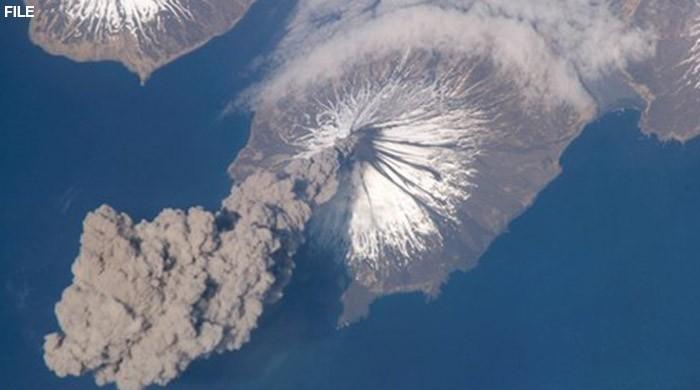Alert level raised for Alaska volcano after explosion detected
Scientists raised the alert level for a remote Aleutian volcano on Monday after an explosion was detected on the mountain and heard by residents of a tiny village some 45 miles ...
October 26, 2016

Scientists raised the alert level for a remote Aleutian volcano on Monday after an explosion was detected on the mountain and heard by residents of a tiny village some 45 miles (72 km) away, a monitoring website said.
Cleveland Volcano, a 5,676-foot (1,730-metre) peak on the uninhabited Chuginadak Island, about 940 miles (1,504 km) southwest of Anchorage, was raised to orange from yellow by the Alaska Volcano Observatory.
The orange code, the second-highest on the scale, is issued when a volcano is "exhibiting heightened or escalating unrest with increased potential of eruption," according to the observatory.
A red code is issued when an eruption is imminent or under way.
The observatory said that an explosion was detected on Cleveland by both infrasound and seismic data and heard by residents of Nikolski, a settlement of less than 50 people on Umnak Island about 45 miles (72 km) to the east. Infrasound instruments measure air pressure around the volcano.
Scientists said that cloudy weather obscured Cleveland's peak in satellite images but that no evidence of an eruption cloud had been detected at a height of 28,000 feet (8,534.4 meters).
The volcano, named after US President Grover Cleveland, is one of the most active of Alaska´s scores of volcanoes and its ash cloud could pose a threat to aircraft when it erupts.
Earlier this year Mount Pavlof on the Alaska Peninsula erupted with little advanced warning, spewing an ash cloud up to 20,000 feet (6,096 meters) high that prompted aviation warnings across the region.
Pavlof is currently at yellow on the alert scale, meaning that it is "exhibiting signs of elevated unrest" but not erupting, according to the observatory.









